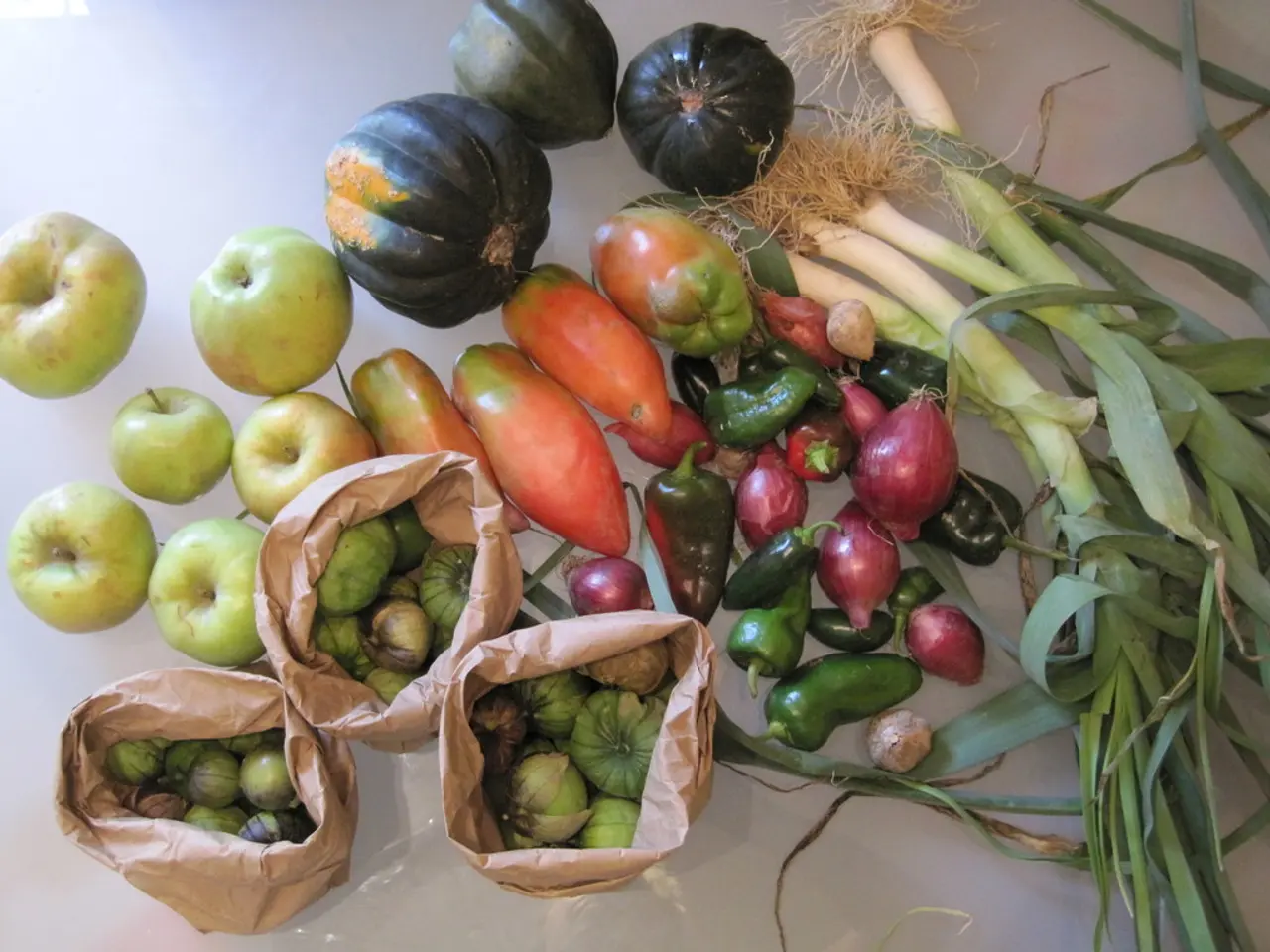Cultivate your edible plants in April
In April, as the weather becomes warmer and more unpredictable, it's time to start preparing your outdoor space for summer crops. Here's a guide on growing courgettes (zucchini) and asparagus, two popular vegetables that will add flavour and variety to your meals.
Growing Courgettes
To grow courgettes and summer squash outdoors in April, follow these key steps:
- Timing: Sow seeds outdoors from mid to late April only if the danger of frost has passed or is very unlikely. Many gardeners wait until mid or late May to plant out seedlings to avoid damage from any late frosts[1][4].
- Choose a sunny spot with at least 6-8 hours of direct sunlight daily. Use rich, well-draining soil amended with plenty of compost or well-rotted manure to ensure good nutrient content and soil structure[1][3].
- Sow seeds about 1 inch (2.5 cm) deep. You can plant seeds directly outdoors after frost risk or start seeds indoors 3-4 weeks before to transplant later[3][5]. For direct sowing, plant 6-8 seeds per hill spaced about 2 feet apart, thinning to 3-4 healthy plants once true leaves appear[5].
- Provide ample room for growth, spacing plants about 2-3 feet apart and leaving 6 feet between rows or hills for good airflow and disease prevention[1][5].
- Keep soil consistently moist, especially when fruits start to develop. Water at the base of plants to avoid wetting leaves (which can cause mildew). Mulching helps retain moisture and control weeds[3].
- Pick fruits when young and tender (6-8 inches for zucchini) to encourage more production[3][5].
In summary, in most regions, April is the time to start seeds indoors or sow directly if frost risk is low, but many gardeners prefer to wait until May to plant out for safety. Ensure warm soil, good sunlight, rich soil, and proper spacing for best results.
This advice aligns with the best practices found in gardening resources and seed supplier instructions[1][3][4][5].
Growing Asparagus
For asparagus, it's a good idea to plant crowns in April to make a new bed. Asparagus crowns can be planted to make a new bed, with home-grown asparagus being much tastier than store-bought. Extra drainage and lots of organic matter are needed for asparagus plants to thrive in heavy soil.
A new bed of asparagus should be planted every 8-10 years when the old one begins to slow down. It takes at least 2 years before you can harvest from asparagus crowns.
Remember, April is also the time to sow courgette and squash seeds. One seed per pot, sowed vertically about 2cm deep, is all you need. Keep seeds warm and in plenty of light, as it takes about 6 weeks from sowing to planting.
For more gardening advice, check out Rosie Yeomans' tips for the fruit and vegetable garden in April. Growing one green, one yellow, and one striped variety of courgettes can add visual interest to your garden.
[1] RHS (Royal Horticultural Society) - Growing Courgettes: https://www.rhs.org.uk/advice/profile?PID=567 [2] RHS (Royal Horticultural Society) - Growing Asparagus: https://www.rhs.org.uk/advice/profile?PID=101 [3] Gardener's World - Growing Courgettes: https://www.bbc.co.uk/gardening/howto/growing_courgettes [4] Gardener's World - Sowing Courgettes: https://www.bbc.co.uk/gardening/howto/sowing_courgettes [5] Thompson & Morgan - Courgettes: https://www.thompson-morgan.com/grow-your-own/vegetables/courgettes/
After planting asparagus crowns in April to establish a new home-garden bed, it's essential to consider extra drainage and organic matter for the asparagus plants to thrive. Simultaneously, April is the ideal time to sow courgette and squash seeds indoors or directly outdoors, if frost risk is low, as part of enhancing one's lifestyle with home-and-garden fruits and vegetables. Growing a variety of courgettes adds both flavor and visual interest to the garden.




